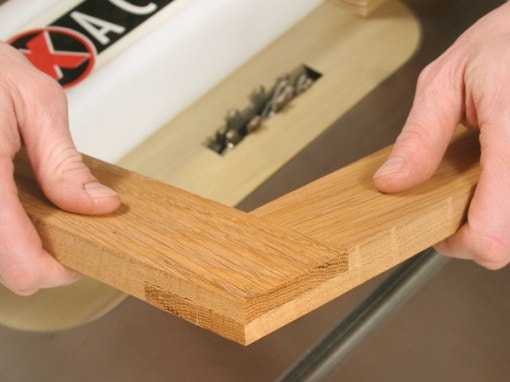Best Way to Cut Half Laps?
I am making a door with half lap joints. We have all seen this done using a dado blade. We have also seen stub tenons made this way. A dado blade is a rip blade, meant to go with the grain of the wood. When you use it to cut a half lap or a stub tenon, it leaves a very ragged surface, which would seem unsuitable for a glue joint. I used my shoulder plane to clean up the rough cut, so my question for you is: Should you use a dado blade to cut tenons or half lap joints, or is there a better way? Is a band saw accurate enough for this type of joint, or is the only option a tenoning jig, which limits the length of the wood that you can use? - Jon Roulea
Chris Marshall: The outer blades of most quality dado sets are actually combination blades, not ripping blades (ripping blades have a much more aggressive hook angle to the teeth). They're intended to offer a reasonably clean cutting solution for both long-grain and cross-grain cuts. And, when you think about it, they have to be, because so many joinery cuts run across the grain.
My favorite way to cut half laps and tenons is with a dado blade, laying the workpiece down flat on the saw table to serve as a reliable reference surface. I typically cut my tenons slightly too tight, then plane them down as you do, Jon, for a slip fit. So, I don’t think a dado blade is a bad choice to use for all-around joinery cuts. But, if the blades and chippers on your dado really make a mess of the cuts (there's quite a range of cutting quality with them), the other options you suggest could certainly work, too. Most tenoning jigs — especially the cast-iron prefabricated versions — can handle a pretty large and long workpiece, and using a standard blade to make the cuts will yield cleaner surfaces than a dado set. A band saw could also work. The issue there is to make sure the band saw’s table is square to the blade — both along the side and back of the blade.
Another option could be the router table. A straight, mortising or spiral bit can produce very accurate and clean cuts. Or, for short sub tenons, a rabbeting bit can make quick work of the job. So, keep the router table in mind as well.

Tim Inman: Suitability for the job at hand seems to me to be the root of your question and your good observations. Is the blade suitable? Is the surface suitable? Is the intended adhesive suitable? As usual, the answer begins with, "It all depends."
Back in my salad days, we used saws to make the cuts. Sometimes we used hand saws, sometimes we used band saws, sometimes we used circular saws. All the saws left their own peculiar surface defects, as you are observing. Back then, we used an awful lot of good old hot brown sticky hide glue. While hide glue is a wonderful adhesive for many uses still to this day, it does not compensate for poor surface contact in the joints due to things like sloppy sawed surfaces. The fix? We hand planed each and every surface that was to be bonded with glue. This is what a block plane is for. We not only hand planed the surfaces of lap joints like you are describing and tenon faces, we hand planed the end grain of mitered joints (which is what a block plane is "really" for).
What is your adhesive choice for this job? If you are wanting to make a door in the traditional way, as an antique restorer would want to do, then you must plane those surfaces to mate perfectly together before you add the glue. On the other hand, we are now in the 21st century. We do have alternative adhesives which do compensate for gaps in mating surfaces. Epoxy is wonderful as a gap filling adhesive. Some urethanes are good, too. Although these adhesives can be excuse makers for poor joinery, they are also highly effective and can make the difference between profit and loss if you are working for pay.
This brings us to the ultimate question: What is your budget? What is your money budget? What is your time budget? Modern gap filling adhesives will cost more money, but they will save tons of time, making it easier on your budget. The ultimate strength of the joint will probably be superior with these alternative adhesives. The glue line will show more and the aesthetics will be less, but the joint will be strong, cheaper and you will be more "profitable." If you have the time budget, and you have the aesthetic need in addition to the historic one, then I would plane those joints to fit and enjoy the process, whatever glue you decide to use.
Keep the inspiration coming!
Subscribe to our newsletter for more woodworking tips and tricks





